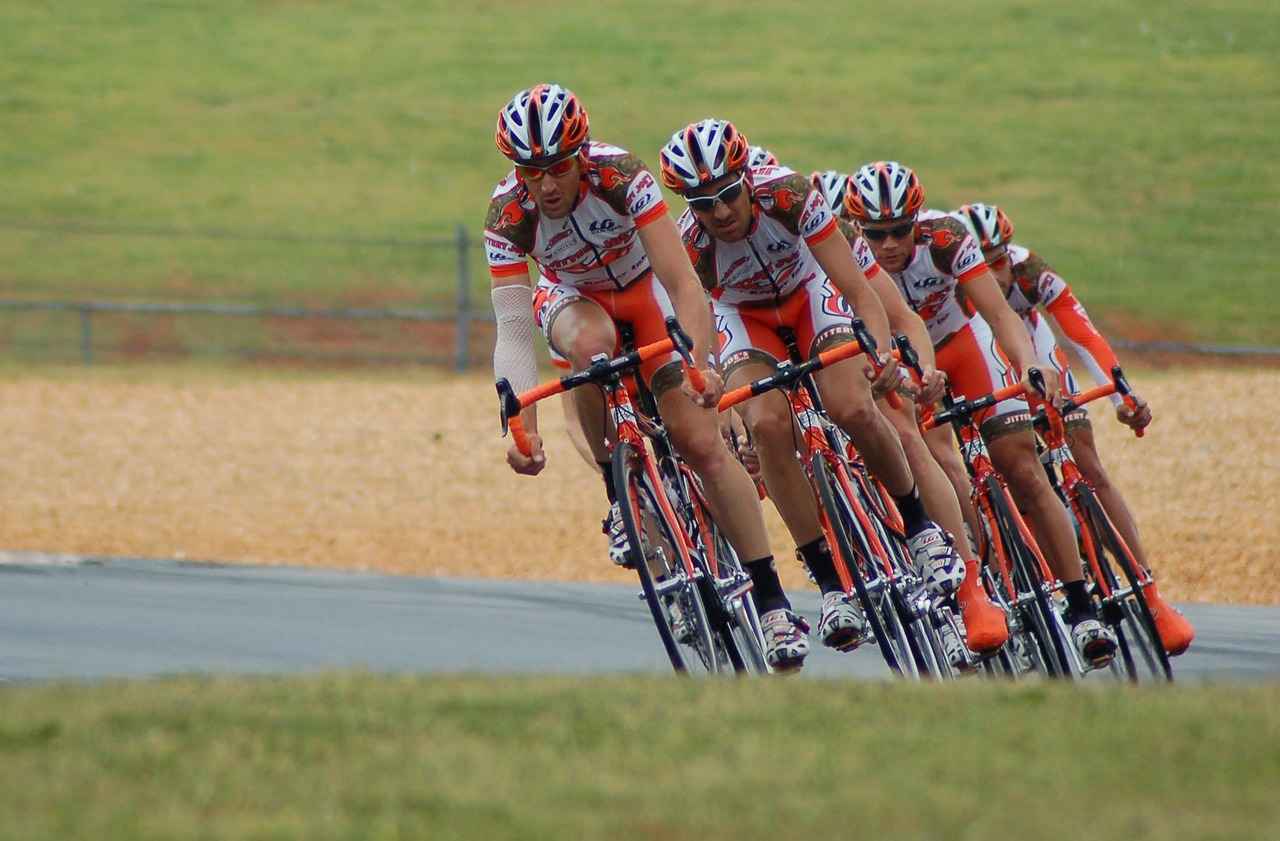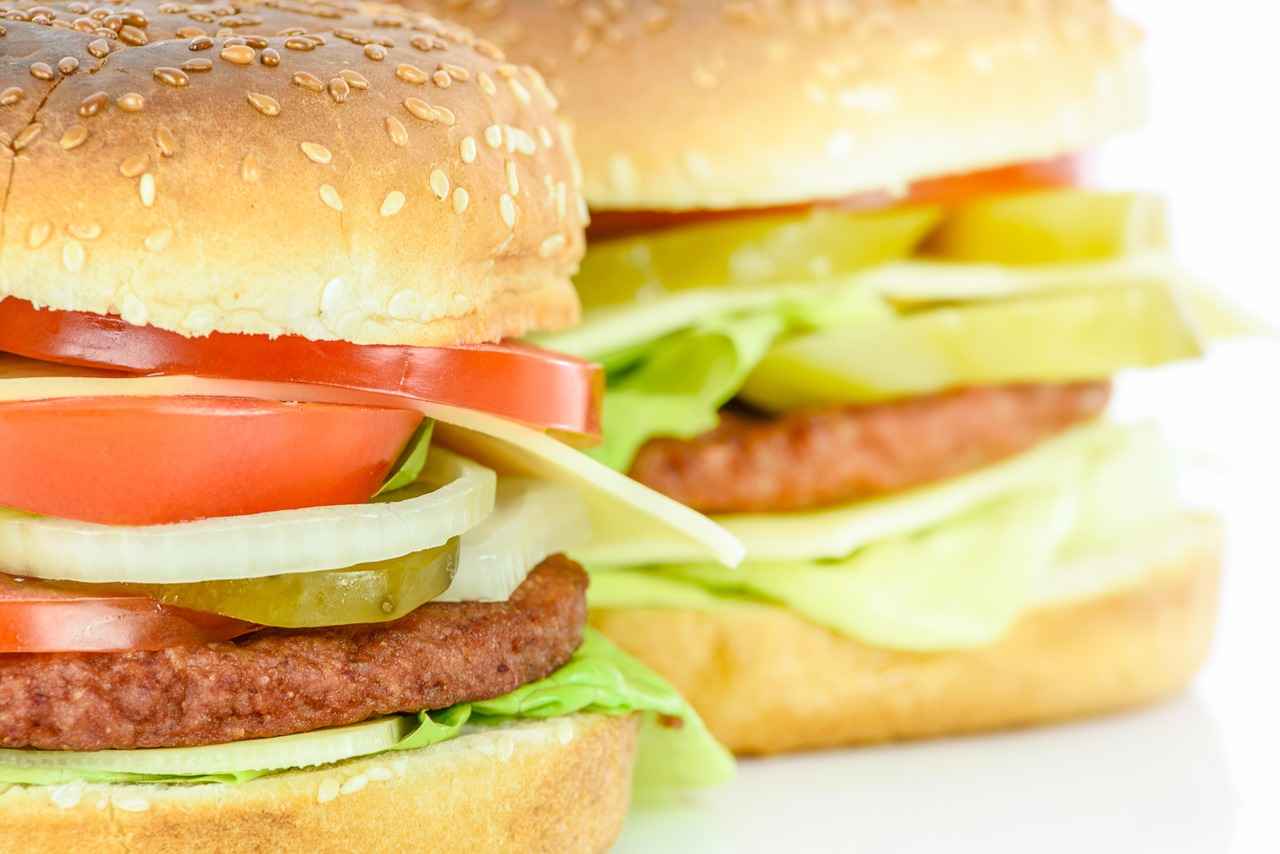This article explores effective methods and guidelines for safely breaking a 5-day water fast, ensuring a smooth transition back to regular eating habits while minimizing potential health risks.
Understanding Water Fasting
Water fasting is the practice of consuming only water for a designated period, typically for detoxification or weight loss. It is essential to understand both the benefits and risks associated with this practice. Many individuals report increased mental clarity and a sense of rejuvenation, but it is vital to approach this fasting method with caution.
Why Break a Fast Properly?
Breaking a fast improperly can lead to serious digestive issues such as bloating, nausea, and even more severe complications. A gradual reintroduction of food is crucial to allow the digestive system to adjust and function effectively.
Signs You Are Ready to Break Your Fast
- Physical Symptoms: Common signs include fatigue, hunger pangs, or a general sense of discomfort. These cues indicate that your body is ready for food.
- Mental Readiness: Mental clarity and focus can signify that it’s time to end your fast. Assessing your psychological state is essential in making this decision.
Best Foods to Break a Fast
Selecting the right foods is vital for a smooth transition back to eating. Here are some recommended options:
- Soft Fruits and Vegetables: Foods like bananas, avocados, and steamed carrots are gentle on the digestive system and packed with nutrients.
- Broths and Soups: Nutritious options such as vegetable or bone broth provide hydration and essential minerals, making them an excellent choice for your first meal.
Portion Control After a Fast
Practicing portion control is critical when reintroducing food. Overeating can lead to discomfort and digestive issues.
- Start Small: Begin with small portions to help your body adjust gradually. This approach minimizes the risk of overwhelming your digestive system.
- Gradual Increase: Slowly increasing portion sizes over several meals allows your body to adapt without stress.
Hydration After Fasting
Proper hydration is crucial after breaking a fast. Understanding how to hydrate effectively can enhance your recovery.
- Water Intake: Reintroducing water slowly is vital. Your body may need time to adjust to increased fluid intake after fasting.
- Electrolyte Balance: Restoring electrolyte balance is crucial for overall health. Incorporating electrolyte-rich drinks can support your body’s recovery process.
Potential Risks of Breaking a Fast Incorrectly
Being aware of the risks associated with improperly breaking a fast can help you take necessary precautions.
- Digestive Distress: Consuming the wrong foods or overeating can result in digestive distress, including bloating and nausea.
- Refeeding Syndrome: This serious condition can occur if food is reintroduced too quickly, emphasizing the need for caution during the refeeding phase.
In summary, breaking a 5-day water fast requires careful consideration and planning. By understanding the signs of readiness, choosing the right foods, practicing portion control, and maintaining hydration, you can ensure a safe and effective transition back to regular eating habits. Always listen to your body and consult with a healthcare professional if you have concerns about your fasting experience.

Understanding Water Fasting
is essential for anyone considering this practice. Water fasting is a method that involves abstaining from all food and consuming only water for a designated period. This practice has gained popularity for its potential health benefits, including detoxification, weight loss, and mental clarity. However, it is crucial to understand the underlying principles and effects of water fasting before embarking on this journey.
Water fasting serves various purposes, from spiritual cleansing to physical health improvements. Many individuals engage in water fasting as a means to reset their bodies, allowing for a break from processed foods and unhealthy eating habits. By consuming only water, the body is given a chance to focus on healing and detoxification, potentially leading to improved overall health.
- Detoxification: One of the primary purposes of water fasting is to facilitate the detoxification process. During the fast, the body can eliminate toxins and waste products, promoting better organ function.
- Weight Loss: Many people turn to water fasting as a method for weight loss. By reducing caloric intake, the body begins to burn stored fat for energy, leading to potential weight reduction.
- Mental Clarity: Participants often report enhanced mental clarity and focus during a water fast. This effect may be attributed to reduced fluctuations in blood sugar levels and the absence of food distractions.
Despite its benefits, it is essential to approach water fasting with caution. Individuals with pre-existing health conditions, such as diabetes or eating disorders, should consult a healthcare professional before attempting a water fast. Additionally, understanding the potential risks and side effects is crucial for a safe experience.
Throughout the fasting period, the body undergoes various physiological changes. Initially, glycogen stores are depleted, prompting the body to enter a state of ketosis, where fat is utilized for energy. This metabolic shift can lead to weight loss and increased fat burning. However, it is vital to monitor one’s health closely, as prolonged fasting can lead to deficiencies in essential nutrients.
To maximize the benefits of water fasting, individuals should prepare adequately. This preparation includes setting realistic goals, understanding the duration of the fast, and ensuring proper hydration. Drinking adequate amounts of water is crucial, as it helps to prevent dehydration and supports bodily functions during the fasting period.
In conclusion, understanding water fasting involves recognizing its purpose and potential benefits while approaching it with caution. By being informed and prepared, individuals can safely engage in this practice and enjoy the numerous health benefits it offers.

Why Break a Fast Properly?
Breaking a fast is a critical process that requires careful attention and understanding. Improperly breaking a fast can lead to significant digestive distress and various health issues, making it essential to approach this phase with caution. The body undergoes numerous physiological changes during a fast, and reintroducing food too quickly can overwhelm the digestive system.
When fasting, the digestive system slows down as the body conserves energy. This adaptation can make it challenging for the gut to handle large amounts of food immediately after a prolonged period without intake. As a result, individuals may experience symptoms such as bloating, nausea, and even more severe complications like refeeding syndrome, a dangerous condition that can occur when food is reintroduced too rapidly.
To avoid these issues, a gradual reintroduction of food is crucial. This process allows the digestive system to reactivate and adjust to the intake of nutrients. Starting with small, easily digestible meals can help ease the transition. Foods such as broths, soft fruits, and lightly steamed vegetables are excellent choices for the initial meals after a fast. These foods are gentle on the digestive tract and provide essential nutrients without overwhelming the system.
Additionally, listening to your body is vital during this phase. Pay attention to how your body reacts to different foods and adjust your intake accordingly. If you experience discomfort, it may be a sign that you need to slow down and give your body more time to adjust.
Moreover, hydration plays a significant role in breaking a fast properly. After a period of fasting, it is essential to rehydrate gradually. Begin by sipping water and incorporating electrolyte-rich drinks to restore balance in the body. This approach not only aids digestion but also supports overall recovery.
In summary, breaking a fast properly is crucial for maintaining digestive health and preventing complications. By gradually reintroducing food, paying attention to your body’s signals, and ensuring proper hydration, you can safely transition back to regular eating habits. This mindful approach not only promotes better digestion but also enhances the overall benefits gained from the fasting experience.

Signs You Are Ready to Break Your Fast
Recognizing the right time to end a fast is crucial for ensuring a safe and healthy transition back to eating. Understanding both physical and mental signs can guide you in making the best decision for your body. This section delves into the various indicators that suggest you are ready to break your fast.
As your fasting period progresses, your body will exhibit several physical symptoms that can signal it is time to reintroduce food. Here are some common signs:
- Fatigue: If you notice an increase in tiredness or lethargy, this may indicate that your body is in need of energy from food.
- Hunger Pangs: Persistent feelings of hunger are a clear indication that your body is ready for nourishment.
- Headaches: While some headaches can be normal during fasting, a sudden onset after a prolonged period may suggest a need for food.
- Dizziness: Experiencing dizziness can be a sign of low blood sugar levels, indicating that it might be time to break your fast.
In addition to physical symptoms, your mental state plays a significant role in determining when to end a fast. Here are some mental cues to consider:
- Mental Clarity: If you find that your focus is waning and mental clarity is diminishing, it may be time to eat.
- Irritability: Feeling unusually irritable or moody can be a sign that your body is craving nutrients.
- Cravings for Specific Foods: If you start craving specific foods, it may indicate your body’s need for certain nutrients.
It is essential to listen to your body and respect its signals. Ignoring these signs can lead to discomfort and health issues. Here are some tips to help you gauge your readiness:
- Keep a Journal: Documenting your feelings and physical symptoms during fasting can help you identify patterns that indicate readiness.
- Consult with a Professional: If unsure, consider seeking advice from a healthcare professional or a nutritionist to ensure a safe transition.
- Take Your Time: If you feel any hesitation, it’s okay to wait a little longer before breaking your fast. Your body will guide you.
Recognizing the signs that indicate readiness to break a fast is essential for a safe and healthy transition back to eating. By paying attention to both physical and mental cues, you can ensure that you are making the best decision for your body.
Physical Symptoms
When engaging in a water fast, listening to your body is crucial. One of the primary ways your body communicates its needs is through physical symptoms. Recognizing these signals can help you determine the right moment to break your fast safely.
Common physical symptoms such as fatigue or hunger pangs are often the first indicators that your body is ready for food. These sensations can be your body’s way of telling you that it requires nourishment to regain energy and support vital functions. Ignoring these cues can lead to complications, making it essential to pay attention to what your body is saying.
In addition to fatigue and hunger, you might experience other symptoms that signal readiness to eat:
- Dizziness: A feeling of lightheadedness can indicate that your body needs nutrients.
- Headaches: These can occur during fasting but may also signal the need for food.
- Increased irritability: Mood swings can be a sign of low energy and nutrient deficiency.
- Physical weakness: This can be a clear indication that your body is lacking the fuel it needs.
It’s important to note that these symptoms may vary from person to person, depending on individual health conditions and fasting experience. Therefore, it’s essential to develop a personal understanding of your body’s signals.
Moreover, mental readiness plays a significant role in determining when to break a fast. You may notice improvements in mental clarity or focus as you approach the end of your fasting period. This psychological state can also indicate that your body is prepared for food, as a clear mind often accompanies a stable energy level.
Understanding both physical and mental signs can help create a holistic approach to breaking your fast. It’s not just about the absence of hunger; it’s about recognizing when your body and mind are in alignment, ready to transition back to regular eating habits.
As you prepare to break your fast, consider starting with light foods that are easy on your digestive system. Foods such as soft fruits, steamed vegetables, and broths are excellent choices. They can help ease your body back into the process of digestion without overwhelming it.
In conclusion, being attuned to your body’s physical symptoms and mental state is vital when deciding to end a water fast. By recognizing these cues, you can ensure a safer and more effective transition back to your regular diet, ultimately promoting better health and well-being.
Mental Readiness
is a crucial aspect of determining when to break a fast. It goes beyond merely observing physical symptoms; it encompasses a deeper understanding of your psychological state. During a prolonged fast, such as a 5-day water fast, your mind undergoes various changes that can significantly impact your decision-making process.
One of the most telling signs of mental readiness is clarity and focus. When your mind feels sharp and you can concentrate on tasks without feeling distracted or fatigued, it may indicate that your body is ready to transition back to eating. Conversely, if you find yourself feeling foggy, irritable, or unable to concentrate, it might be wise to wait a bit longer before breaking your fast.
Understanding your psychological state during fasting can help you assess whether you are emotionally prepared to reintroduce food into your diet. For many, fasting can lead to a heightened sense of awareness and introspection. This mental clarity can be empowering, but it’s essential to ensure that this newfound focus is not clouded by cravings or emotional impulses. Listening to your mind is just as important as listening to your body.
Additionally, consider the emotional triggers that may arise during fasting. Some individuals experience cravings that are more psychological than physical, driven by habits or environmental cues. Recognizing these triggers can help you make a more informed decision about when to break your fast. If you feel an overwhelming urge to eat due to emotional reasons rather than genuine hunger, it might be beneficial to wait until your mind is more stable.
Another aspect to consider is your overall mood. A balanced emotional state can indicate that you are ready to reintroduce food. If you are feeling anxious or stressed, it may be better to postpone breaking your fast until you achieve a more calm and stable mindset. This approach can help you avoid potential overeating or unhealthy food choices when you do decide to eat.
It’s also essential to reflect on your goals for fasting. Are you fasting for health reasons, spiritual growth, or simply to reset your eating habits? Understanding your motivations can provide clarity on whether you are ready to break your fast. If your primary goal is to improve your health, then waiting for the right mental state can enhance the benefits of your fasting experience.
In summary, assessing your mental readiness is a vital component of safely breaking a fast. Mental clarity, emotional stability, and awareness of psychological triggers are all factors that can guide your decision. By taking the time to evaluate your mental state, you can ensure a smoother transition back to eating, ultimately leading to a more positive and beneficial fasting experience.

Best Foods to Break a Fast
Breaking a fast is a critical phase in the fasting process, and choosing the right foods to reintroduce can significantly impact your digestive health. After a prolonged period without food, your body requires gentle nourishment to ease back into its regular eating routine.
When considering what to eat after a fast, it is important to opt for easily digestible foods that provide essential nutrients without overwhelming your system. Here are some of the best options:
- Soft Fruits: Fruits such as bananas, applesauce, and ripe pears are excellent choices. They are rich in vitamins and minerals and are gentle on the stomach.
- Cooked Vegetables: Steamed or boiled vegetables like zucchini, carrots, and spinach are easy to digest and packed with nutrients. They help replenish lost vitamins during the fast.
- Bone Broth: This nutrient-dense liquid is not only soothing but also rich in minerals and collagen, making it a perfect first food after a fast.
- Soups: Light vegetable or chicken soups can provide hydration and nourishment. They are warm and comforting, making them ideal for reintroducing food.
- Fermented Foods: Foods like yogurt or kefir can help restore the gut microbiome, which may have been affected during the fasting period. They also aid in digestion.
- Oatmeal: A small serving of plain oatmeal can be a great way to introduce carbohydrates back into your diet. It is filling yet easy to digest.
It’s essential to start with small portions of these foods to allow your digestive system to adjust. Gradually increasing the quantity over the next few meals will help your body adapt without causing discomfort.
Additionally, hydration plays a crucial role in this transition. After a fast, your body may be dehydrated, so it is important to reintroduce fluids slowly. Water, herbal teas, and electrolyte-rich drinks can aid in this process.
Remember, the goal is to nourish your body while minimizing the risk of digestive distress. Avoiding heavy, greasy, or processed foods is crucial during this period, as they can lead to bloating, nausea, or other digestive issues.
In summary, the foods you choose to break your fast can significantly influence your recovery and overall digestive health. By selecting gentle, nutrient-rich options and gradually increasing your food intake, you can ensure a smoother transition back to regular eating habits.
Soft Fruits and Vegetables
When breaking a fast, it is essential to choose foods that are easy on the digestive system. are among the best options for reintroducing solid foods after a period of fasting. These foods not only provide crucial nutrients but also help ease the transition back to a regular diet.
Soft fruits and vegetables are known for their gentle texture and high digestibility. They are less likely to cause discomfort compared to harder, fibrous foods. This characteristic makes them particularly suitable for individuals who have just completed a fast. Additionally, these foods are rich in vitamins, minerals, and antioxidants, which are vital for recovery and overall health.
- Bananas: Easy to digest and high in potassium, bananas help replenish lost electrolytes.
- Avocados: Creamy and nutrient-dense, avocados provide healthy fats and fiber.
- Cooked Carrots: Softened through cooking, carrots are rich in beta-carotene and other essential nutrients.
- Steamed Spinach: This leafy green is high in iron and vitamins, and steaming makes it easier to digest.
- Applesauce: A great source of fiber, applesauce is gentle on the stomach and can aid digestion.
Incorporating soft fruits and vegetables into your post-fast diet can provide a range of nutritional benefits. These foods are often high in water content, which helps with rehydration after a fasting period. They also contain essential vitamins such as Vitamin C, which supports the immune system, and B vitamins, which aid in energy metabolism.
Preparing soft fruits and vegetables can be simple and efficient. Here are a few methods:
- Steaming: This method retains nutrients while making vegetables tender.
- Blending: Smoothies made with soft fruits can be a delicious and nutritious option.
- Pureeing: Pureed soups or mashed vegetables can be comforting and easy to digest.
As you ease back into eating, start with small portions of soft fruits and vegetables. Gradually increase the amount as your body adjusts. This approach minimizes the risk of digestive discomfort and allows your system to acclimate to solid foods again.
Soft fruits and vegetables serve as an excellent choice when breaking a fast. Their gentle nature, combined with their rich nutrient profile, makes them ideal for restoring health and energy. By incorporating these foods thoughtfully into your post-fast diet, you can ensure a smoother transition back to regular eating habits.
Broths and Soups
When breaking a fast, especially after an extended period like a 5-day water fast, it is crucial to choose the right foods to reintroduce into your diet. One of the most beneficial options is nutritious broths and soups. These options not only help to rehydrate your body but also provide essential minerals and nutrients that may be depleted during fasting.
Broths and soups are incredibly gentle on the digestive system. After days of consuming only water, your gastrointestinal tract needs time to adjust to solid foods. Starting with liquids allows your body to ease back into digestion without overwhelming it. The warm temperature of broths can also help stimulate digestive enzymes, making the transition smoother.
Moreover, broths and soups are rich in electrolytes and minerals. During a water fast, the body can lose vital nutrients like sodium, potassium, and magnesium. Consuming a well-prepared broth can help replenish these minerals, supporting overall health and recovery. For instance, bone broth contains collagen, amino acids, and minerals that are beneficial for joint health and skin elasticity.
- Hydration: Broths are primarily water, making them an excellent choice for rehydration. Proper hydration is essential after fasting, as it helps maintain bodily functions and promotes recovery.
- Flavor and Satisfaction: After a long period without solid food, the flavors in broths and soups can be incredibly satisfying. They can help curb cravings and provide a sense of fullness without the heaviness of solid meals.
- Customizable: You can easily customize broths with various vegetables, herbs, and spices to suit your taste and nutritional needs. Incorporating ingredients like ginger or garlic can also provide additional health benefits.
When preparing broths for breaking a fast, consider using organic ingredients to ensure you are consuming high-quality nutrients. Homemade broths allow you to control the ingredients and avoid preservatives or artificial additives that can be found in store-bought options.
It is advisable to start with a clear broth before moving on to more complex soups that include solid ingredients. This gradual approach allows your body to adapt to the reintroduction of food more effectively. For example, beginning with a simple chicken or vegetable broth can prepare your digestive system for more substantial meals later on.
In addition to physical benefits, consuming broths can also have psychological advantages. The act of preparing and enjoying a warm bowl of soup can be comforting and satisfying, helping to ease the transition back to eating. This emotional aspect of eating should not be overlooked, as it plays a significant role in overall well-being.
In conclusion, incorporating nutritious broths and soups into your post-fast diet is a wise decision. They not only provide hydration and essential nutrients but also offer a gentle way to reintroduce food to your system. As you navigate the process of breaking your fast, remember to listen to your body and take it slow, ensuring a safe and healthy transition back to regular eating habits.

Portion Control After a Fast
When it comes to breaking a fast, particularly after a prolonged period like a 5-day water fast, portion control becomes a fundamental practice. This approach is essential not only for physical well-being but also for ensuring a smooth transition back to regular eating habits. Overeating at this stage can lead to a variety of discomforts and digestive issues that can hinder your recovery.
After an extended fast, your digestive system has essentially been on hiatus. It requires a gentle reintroduction of foods to function optimally again. Here are some key points to consider when practicing portion control:
- Start Small: Initiating your post-fast eating with small portions is crucial. This allows your stomach and intestines to gradually acclimate to food intake. A good starting point might be just a few bites of soft fruits or vegetable broths.
- Choose Nutrient-Dense Foods: Focus on foods that are rich in nutrients but low in volume. For example, soft fruits like bananas or cooked vegetables can provide essential vitamins without overwhelming your digestive system.
- Listen to Your Body: Pay attention to how you feel after each small meal. If you experience any discomfort, it may be a sign that you are eating too quickly or in too large of portions.
- Gradual Increase: After the initial small portions, you can gradually increase your food intake over the next few meals. This gradual approach helps your body adapt without causing distress.
To further illustrate the importance of portion control, consider the potential health risks associated with overeating after a fast:
| Risk | Description |
|---|---|
| Digestive Distress | Overeating can lead to symptoms such as bloating, nausea, and discomfort as your digestive system struggles to process large amounts of food. |
| Refeeding Syndrome | This serious condition can occur when food is reintroduced too quickly, leading to electrolyte imbalances that can affect heart function and overall health. |
In addition to physical risks, overeating can also have psychological effects. The experience of discomfort can lead to negative associations with food, making it harder to maintain a healthy relationship with eating in the future. Therefore, practicing mindful eating during this transition is crucial. Take the time to savor each bite, and pay attention to your body’s signals of hunger and fullness.
In summary, portion control is a vital aspect of safely breaking a fast. By starting with small, nutrient-rich meals and gradually increasing your portions, you can minimize the risk of digestive discomfort and support your body’s recovery process. Remember, the goal is to ease back into eating while respecting your body’s needs.
Start Small
When transitioning from a prolonged fasting period, such as a 5-day water fast, it is crucial to approach the reintroduction of food with caution. One of the most effective strategies to ensure a smooth transition is to start with small portions. This method allows your body to adjust gradually to the intake of food, which is essential for maintaining digestive health.
After an extended period without food, your digestive system becomes less active. By beginning with small amounts of easily digestible foods, you can gently stimulate your digestive tract. This gradual approach minimizes the risk of overwhelming your system, which can lead to discomfort or digestive issues. For instance, consuming a small piece of soft fruit or a few spoonfuls of broth can be an excellent way to ease back into eating.
Incorporating light meals is not just about the quantity but also the quality of food. Foods that are rich in nutrients yet easy to digest, such as mashed bananas or cooked vegetables, are ideal. These options provide essential vitamins and minerals while being gentle on your stomach. Starting small also allows you to monitor how your body reacts to food after fasting. If you experience any discomfort, you can adjust accordingly without feeling overwhelmed.
As you begin to reintroduce food into your diet, consider the following tips:
- Listen to Your Body: Pay attention to how you feel after consuming small portions. If you experience any negative symptoms, it may be wise to slow down the refeeding process.
- Stay Hydrated: Alongside small food portions, maintaining hydration is essential. Drink water or herbal teas to aid digestion.
- Opt for Frequent, Smaller Meals: Instead of jumping back into regular meal sizes, consider eating smaller meals throughout the day to help your digestive system adjust.
After a few days of starting small, you can gradually increase your portion sizes. This gradual increase is vital as it allows your body to adapt to a normal eating pattern without the shock of sudden large meals. It is recommended to increase portion sizes incrementally, ensuring each meal remains balanced and nutritious.
Additionally, understanding the importance of portion control cannot be overstated. Overeating right after a fast can lead to conditions such as digestive distress, which includes symptoms like bloating, nausea, and abdominal discomfort. By practicing portion control and starting small, you significantly reduce the risk of these adverse effects.
In conclusion, starting with small portions when breaking a fast is a vital step in ensuring a safe and effective transition back to regular eating. This method not only helps to prevent overwhelming your digestive system but also promotes a healthier relationship with food as you reintroduce it into your diet. By being mindful of your body’s responses and adjusting accordingly, you can enhance your overall recovery and well-being after fasting.
Gradual Increase
When transitioning from a 5-day water fast back to regular eating, it is crucial to approach the process with care and intention. One effective strategy for ensuring a smooth reintroduction of food is through a in portion sizes over several meals. This method not only helps your body adapt but also minimizes the risk of digestive discomfort and other health issues.
Initially, after breaking your fast, it’s advisable to start with small portions. Consuming tiny amounts of food allows your digestive system, which has been inactive for several days, to slowly regain its functionality. Foods such as soft fruits, vegetables, and broths are excellent choices for this phase. They are gentle on the stomach and provide essential nutrients without overwhelming your system.
As you progress, you can gradually increase your portion sizes. This incremental approach allows your body to adjust to the reintroduction of solid food without causing stress to your digestive tract. For instance, if you start with a few spoonfuls of broth, you can gradually add more liquid, then move on to small servings of mashed potatoes or pureed vegetables. This step-by-step method ensures that your body has time to react positively to each new food item.
It’s important to listen to your body during this process. Pay attention to how you feel after each meal. If you experience any discomfort, it may be a sign that you are increasing portion sizes too quickly. In such cases, it is wise to scale back and allow more time before attempting to eat larger portions again. This practice not only promotes better digestion but also helps you develop a more mindful relationship with food.
Moreover, the psychological aspect of gradually increasing portion sizes cannot be overlooked. After a prolonged period of fasting, the urge to indulge can be strong. However, by sticking to smaller portions and waiting to feel satisfied, you reinforce healthier eating habits. This approach can aid in preventing binge eating and encourages a more balanced diet moving forward.
Incorporating a variety of foods as you gradually increase portion sizes is also beneficial. Once you feel comfortable with soft foods, you can introduce more complex carbohydrates, lean proteins, and healthy fats. This diversity not only enhances nutrient intake but also helps your body adapt to different textures and flavors, making the transition back to regular meals more enjoyable.
Lastly, maintaining proper hydration during this period is essential. As you increase your food intake, ensure you are also drinking enough water. This will aid in digestion and help prevent any potential issues related to dehydration. Remember, the goal is to create a balanced and sustainable approach to eating that supports your overall health and well-being.
In summary, the process of gradually increasing portion sizes after a water fast is a vital step toward restoring your body’s normal functions. By starting small, listening to your body’s signals, and being mindful of your choices, you can ensure a safe and effective transition back to regular eating habits.

Hydration After Fasting
is a critical aspect that cannot be overlooked. After a prolonged period without food, your body needs careful rehydration to support recovery and restore balance. Understanding how to hydrate effectively can significantly enhance your post-fast experience and promote overall well-being.
When you complete a fast, your body is not only depleted of nutrients but also requires a thoughtful approach to reintroducing fluids. Proper hydration is essential for several reasons:
- Restoring Fluid Balance: After fasting, your body may be in a state of dehydration. Consuming adequate water helps to restore this balance, ensuring that all bodily functions operate smoothly.
- Supporting Digestion: Proper hydration aids in digestion, helping to ease the transition back to solid foods. It can prevent discomfort and assist in nutrient absorption.
- Enhancing Energy Levels: Dehydration can lead to fatigue. By hydrating effectively, you can boost your energy levels and improve your overall mood.
After breaking a fast, it is advisable to reintroduce water gradually. Start with small sips to allow your stomach to adjust. A good rule of thumb is to aim for at least 8-10 ounces of water within the first hour after breaking your fast, followed by regular hydration throughout the day.
Along with water, restoring your electrolyte balance is crucial. Electrolytes such as sodium, potassium, and magnesium play vital roles in maintaining fluid balance and supporting muscle function. Consider incorporating:
- Electrolyte Drinks: Low-sugar electrolyte drinks can help replenish lost minerals without overwhelming your system.
- Coconut Water: This natural alternative is rich in potassium and can be a refreshing way to hydrate.
As you begin to hydrate, it’s essential to be aware of the signs of dehydration. Common symptoms include:
- Dry Mouth: A lack of saliva can indicate that your body needs more fluids.
- Dark Urine: If your urine is darker than usual, it may be a sign that you need to drink more water.
- Fatigue: Persistent tiredness can also signal dehydration.
To ensure effective hydration, consider these practical tips:
1. Start with water, then gradually include electrolyte-rich beverages.2. Monitor your body's signals and adjust your intake accordingly.3. Avoid caffeinated or sugary drinks immediately after fasting, as they can dehydrate you further.4. Incorporate hydrating foods such as cucumbers and watermelon into your meals.
In conclusion, maintaining proper hydration after breaking a fast is essential for recovery and overall health. By understanding the importance of fluid intake and electrolyte balance, you can support your body’s transition back to regular eating habits. Remember to listen to your body and hydrate mindfully for optimal results.
Water Intake
After completing a water fast, rehydration is a critical step that should not be overlooked. The body has undergone significant changes during the fasting period, and it is essential to approach the reintroduction of water with care. This gradual process allows your body to adjust to the increased fluid intake, preventing potential discomfort and health issues.
When you fast, your body enters a state of ketosis, where it begins to utilize fat stores for energy. During this time, your hydration levels may fluctuate. As you resume drinking water, your body may need time to readjust to processing higher volumes of fluid. Sudden rehydration can lead to complications such as water intoxication or electrolyte imbalances.
- Start Small: Begin with small sips of water. This allows your digestive system to react positively and helps prevent overwhelming your body.
- Monitor Your Body’s Response: Pay attention to how your body feels after consuming water. If you experience any discomfort, slow down and give yourself more time.
- Gradual Increase: Gradually increase your water intake over the first few days. This approach helps your body adapt to the new hydration levels without shock.
As you reintroduce water, you may notice several signs indicating that your body is adjusting well:
- Increased Urination: This is a normal response as your kidneys start filtering excess fluids.
- Improved Energy Levels: Adequate hydration can lead to a boost in energy and overall well-being.
- Clearer Skin: Proper hydration can enhance skin health, making it appear more vibrant.
In addition to reintroducing water slowly, consider the following tips to optimize your hydration:
- Incorporate Electrolytes: Consider adding a pinch of salt or consuming electrolyte-rich beverages to help restore balance.
- Herbal Teas: These can provide hydration while offering additional health benefits without overwhelming your system.
- Avoid Sugary Drinks: Steer clear of sodas or juices initially, as they can spike your blood sugar levels and cause discomfort.
Once you have successfully reintroduced water, maintaining proper hydration becomes essential for overall health. Aim to drink at least eight glasses of water a day, adjusting based on your activity levels and climate. Incorporating fruits and vegetables with high water content into your diet can also contribute to your daily hydration needs.
In summary, reintroducing water after a fast should be approached with care and mindfulness. By starting slowly and listening to your body, you can ensure a smooth transition back to regular hydration practices, setting the stage for continued health and well-being.
Electrolyte Balance
Maintaining a healthy electrolyte balance is essential for optimal bodily function, especially after periods of fasting or intense physical activity. Electrolytes, which include sodium, potassium, calcium, and magnesium, play a vital role in various physiological processes, including hydration, muscle function, and nerve signaling. Understanding how to restore this balance effectively can greatly enhance your recovery and overall health.
Electrolytes are minerals that carry an electric charge and are found in your body fluids. They are crucial for maintaining hydration and ensuring that your body’s cells function properly. When you fast or sweat excessively, you can lose these essential minerals, which can lead to imbalances and health issues.
- Fatigue: Feeling unusually tired can indicate low electrolyte levels.
- Muscle Cramps: Involuntary muscle contractions may signal a deficiency in potassium or magnesium.
- Headaches: Dehydration and electrolyte imbalance can lead to frequent headaches.
- Nausea: An upset stomach can also be a symptom of imbalanced electrolytes.
Incorporating electrolyte-rich drinks into your diet is one of the most effective ways to restore balance. Here are some options:
- Coconut Water: Naturally rich in potassium and low in calories, coconut water is an excellent choice for rehydration.
- Electrolyte Drinks: Many sports drinks are formulated to replenish lost electrolytes, but be mindful of added sugars.
- Bone Broth: This nutrient-rich liquid not only provides electrolytes but also supports gut health.
- Fruit Juices: Freshly squeezed juices, particularly orange or watermelon, can offer a good balance of electrolytes.
In addition to drinks, certain foods can help restore your electrolyte levels:
| Electrolyte | Food Sources |
|---|---|
| Sodium | Table salt, pickles, olives |
| Potassium | Bananas, sweet potatoes, spinach |
| Calcium | Dairy products, leafy greens, almonds |
| Magnesium | Nuts, seeds, whole grains |
Proper hydration is critical when restoring electrolyte balance. Here are some tips:
- Drink Water Regularly: Aim to consume water throughout the day, especially after physical activity.
- Monitor Your Urine: Light-colored urine indicates good hydration, while dark urine may suggest dehydration.
- Limit Caffeine and Alcohol: Both can lead to increased fluid loss and should be consumed in moderation.
Restoring electrolyte balance is a crucial aspect of maintaining overall health, especially after fasting or intense exercise. By incorporating electrolyte-rich drinks and foods into your diet, you can support your body’s recovery process and enhance your well-being. Remember to listen to your body and adjust your intake based on your individual needs.

Potential Risks of Breaking a Fast Incorrectly
Breaking a fast is a critical phase that requires careful attention to avoid potential health risks. Understanding the risks associated with improperly breaking a fast can empower you to take necessary precautions, ensuring a safer transition back to normal eating habits.
When a fast is broken incorrectly, it can lead to a variety of health complications. These risks stem from the body’s physiological response to sudden food intake after a prolonged period of abstaining from food. Recognizing these risks is essential for anyone considering or completing a fast.
One of the most immediate consequences of breaking a fast improperly is digestive distress. This can manifest as:
- Bloating: Overeating or consuming heavy foods can overwhelm the digestive system, leading to discomfort.
- Nausea: Introducing food too quickly can trigger nausea, making it difficult to enjoy meals.
- Stomach Cramps: The sudden intake of food can cause painful cramps as the digestive system struggles to adjust.
To mitigate these risks, it is crucial to start with small, easily digestible foods.
Another serious risk associated with breaking a fast incorrectly is refeeding syndrome. This condition occurs when food is reintroduced too rapidly, leading to dangerous shifts in electrolytes and fluids. Key symptoms include:
- Weakness: A sudden drop in phosphate levels can result in muscle weakness.
- Cardiac Issues: Electrolyte imbalances can affect heart function, potentially leading to arrhythmias.
- Neurological Symptoms: Confusion and seizures can occur due to drastic changes in electrolyte levels.
To avoid refeeding syndrome, it’s vital to gradually increase food intake and monitor your body’s response.
Hydration plays a significant role in the fasting process. After a fast, many individuals may forget the importance of proper hydration. Common hydration-related risks include:
- Dehydration: If water intake is not gradually increased, dehydration can occur, leading to headaches and fatigue.
- Electrolyte Imbalance: Rapid fluid intake without electrolytes can exacerbate the risks associated with refeeding syndrome.
To ensure proper hydration, it’s advisable to reintroduce water slowly and consider electrolyte-rich beverages.
Breaking a fast can also have psychological implications. Some individuals may experience feelings of guilt or anxiety related to food intake. This can lead to:
- Overeating: A fear of missing out can cause individuals to consume more than necessary, leading to digestive distress.
- Food Anxiety: The pressure to eat the “right” foods can create stress, impacting overall mental health.
To combat these psychological effects, it’s essential to approach the refeeding process with a balanced mindset and seek support if necessary.
Being aware of the risks associated with improperly breaking a fast is crucial for a safe transition back to eating. By taking the necessary precautions and listening to your body’s signals, you can minimize potential health complications and enjoy the benefits of your fasting journey.
Digestive Distress
When engaging in a water fast, it’s essential to understand the potential risks associated with breaking the fast improperly. One significant concern is , which can manifest in various uncomfortable symptoms. This article delves into the causes of digestive distress after fasting and offers practical advice for mitigating these risks.
Digestive distress refers to a range of symptoms that can arise when the digestive system is overwhelmed or reacts negatively to food intake. Common symptoms include:
- Bloating: A feeling of fullness or swelling in the abdomen.
- Nausea: A sensation of unease or discomfort in the stomach, often leading to the urge to vomit.
- Cramping: Pain or discomfort in the stomach area, often associated with gas or digestive issues.
After a prolonged period of fasting, the body becomes highly sensitive to food. Overeating can lead to significant discomfort as the digestive system struggles to process large amounts of food. When the stomach is suddenly filled with more food than it can handle, it can cause:
- Rapid Gastric Distension: The stomach can stretch rapidly, leading to discomfort and pain.
- Increased Gas Production: Overeating can lead to fermentation of undigested food, producing gas and bloating.
- Delayed Gastric Emptying: The stomach may take longer to empty, causing prolonged feelings of fullness and discomfort.
To minimize the risk of digestive distress, it’s crucial to select gentle foods when breaking a fast. Here are some recommendations:
- Soft Fruits: Bananas, applesauce, and ripe pears are easy to digest and provide essential nutrients.
- Cooked Vegetables: Steamed or boiled vegetables like carrots and zucchini are gentle on the stomach.
- Clear Broths: Nutrient-rich broths can help rehydrate the body while being easy on the digestive system.
Implementing a gradual refeeding strategy can significantly reduce the risk of digestive distress. Here are some tips:
- Start Small: Begin with small portions, focusing on easily digestible foods.
- Frequency Over Quantity: Instead of three large meals, opt for several smaller meals throughout the day.
- Listen to Your Body: Pay attention to how your body responds to each meal and adjust accordingly.
Staying hydrated is essential during the refeeding process. After fasting, the body may require additional fluids to aid digestion and overall recovery. Consider:
- Slow Water Intake: Reintroduce water gradually to avoid overwhelming your system.
- Electrolyte Solutions: Incorporating electrolyte-rich drinks can help restore balance and support digestion.
Being aware of the warning signs of digestive distress can help you take action before symptoms escalate. If you experience:
- Severe Pain: Intense abdominal pain may indicate a more serious issue.
- Persistent Nausea: If nausea continues beyond a few hours, it’s essential to consult a healthcare professional.
- Vomiting: If vomiting occurs, stop eating and focus on hydration.
In conclusion, breaking a fast safely requires careful planning and attention to your body’s signals. By understanding the risks of digestive distress and implementing a gradual refeeding strategy, you can enjoy a smoother transition back to regular eating habits.
Refeeding Syndrome
is a potentially life-threatening condition that can arise when food is reintroduced to a person who has been fasting or malnourished. This syndrome is characterized by a series of metabolic disturbances that occur when carbohydrates are reintroduced too rapidly, leading to significant shifts in electrolytes and fluids within the body. Understanding the risks and mechanisms of refeeding syndrome is crucial for anyone considering breaking a fast, especially one that has lasted for several days.
When a person undergoes a prolonged fast, their body adapts to a state of starvation. During this time, various physiological changes occur, including decreased insulin secretion and reduced glycogen stores. As a result, the body becomes highly sensitive to carbohydrates, and the reintroduction of food must be handled with care. If food, particularly carbohydrates, is reintroduced too quickly, it can lead to a sudden spike in insulin levels. This spike can cause a rapid shift of electrolytes, particularly phosphate, potassium, and magnesium, from the bloodstream into the cells, resulting in potentially dangerous deficiencies.
Among the most critical aspects of preventing refeeding syndrome is awareness. Individuals who have fasted for extended periods or those with a history of malnutrition should be particularly cautious. It is essential to monitor for symptoms such as weakness, confusion, seizures, and arrhythmias, which may indicate electrolyte imbalances. If any of these symptoms occur, it is vital to seek medical attention immediately.
To mitigate the risk of refeeding syndrome, a gradual approach to reintroducing food is highly recommended. This includes:
- Starting Slowly: Begin with small portions of easily digestible foods, such as broths, soft fruits, and cooked vegetables.
- Monitoring Electrolytes: Regularly check electrolyte levels, especially phosphate and potassium, to ensure they remain within safe ranges.
- Hydration: Maintain proper hydration while being cautious about fluid intake, as rapid changes can also lead to complications.
- Professional Guidance: Consulting with a healthcare professional or a registered dietitian can provide personalized advice and monitoring.
In summary, preventing refeeding syndrome involves a careful and informed approach to breaking a fast. By understanding the risks and adhering to best practices, individuals can safely transition back to regular eating habits without jeopardizing their health. Awareness, gradual reintroduction of food, and proper monitoring are key to ensuring a safe and effective refeeding process.
Frequently Asked Questions
- What is the best way to break a 5-day water fast?
The best way to break a 5-day water fast is by starting with gentle foods like soft fruits and vegetables. These options are easy on your digestive system and help ease the transition back to regular eating.
- How can I tell if I’m ready to break my fast?
Listen to your body! Signs like fatigue, hunger pangs, and improved mental clarity indicate that you might be ready to break your fast. Pay attention to these cues to ensure a smooth transition.
- What should I avoid when breaking my fast?
Avoid heavy, rich foods and large portions right after your fast. These can lead to digestive distress and make you feel uncomfortable. Start small and gradually increase your portion sizes.
- How important is hydration after fasting?
Hydration is crucial after breaking a fast. Reintroduce water slowly and consider electrolyte-rich drinks to help restore balance in your body. Staying hydrated supports your recovery process.
- What is refeeding syndrome, and how can I avoid it?
Refeeding syndrome is a serious condition that can occur if you reintroduce food too quickly after fasting. To avoid it, take your time when breaking your fast and gradually increase food intake.












